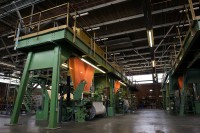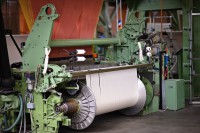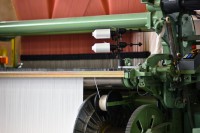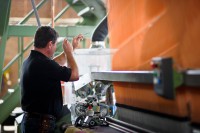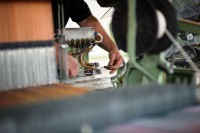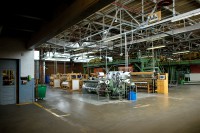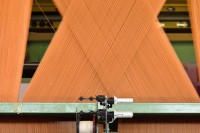TEXTILE INDUSTRY
The textile industry has a long history in the state of North Carolina. The first cotton mill was built here in 1815. New England mills migrated to the Southeast in the early 1900s,. North Carolina became the center of the textile business in the 1920s and remained so through the 20th Century. In the 1990s, however, companies began moving their operations overseas. While a handful of North Carolina textile companies survive, the vast majority have shut down.
WESTERN NORTH CAROLINA
Home to the highest peaks in the Eastern United States, Western North Carolina is often referred to as the “Land of the Sky.”
From its very beginning as a convergence of two Cherokee footpaths, the region has been a crossroads, attracting settlers and visitors with its charm, beauty and spirit. The area’s natural assets, high standard of living and quality work force continue to draw industry, writers, artists, entrepreneurs and visitors. Western North Carolina is a region with local opportunities and global possibilities. Many entrepreneurs have located here. The region’s history as a home to both craftsmen and artisans, as well as textile manufacturing, makes it a natural fit for The Oriole Mill.
THE ORIOLE MILL
The brick, concrete and glass block center core of The Mill was built just after World War II, although it is unclear what its original purpose was. Additions were built in the 1950s. At 72,000 square feet today, its two floors are connected by a freight elevator. In Hendersonville, The Oriole Mill building is most remembered as a former frozen vegetable packaging plant, which explains its now unused rail spur.
Stephan and Bethanne purchased the plant to house The Oriole Mill in 2006. It had been badly maintained. Its roofs leaked, electricity went through fuses, not circuit breakers, outside walls were not insulated, broken windows not repaired, etc. Renovation and reuse of spectacular but worn down old buildings is creating a new South, of which The Oriole Mill is a part. As recast into its role as design studio and mill, the space features natural light and comfort. The mill’s first yard of Jacquard fabric was woven in 2007. Renovation continues, as we construct a full kitchen and eating area, offices and display rooms, and add looms and other facilities.





